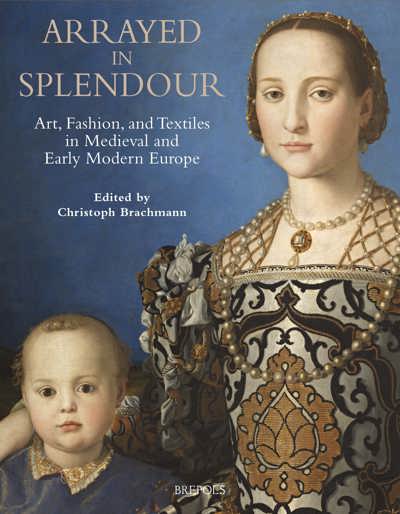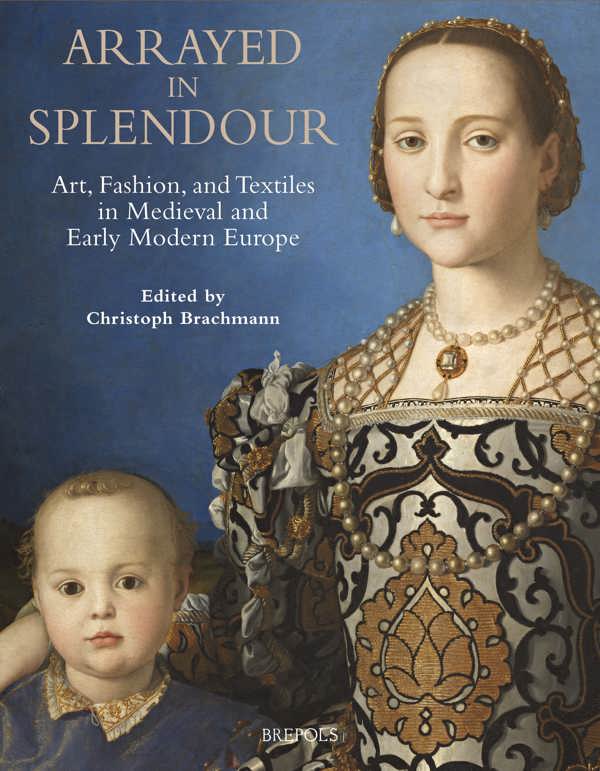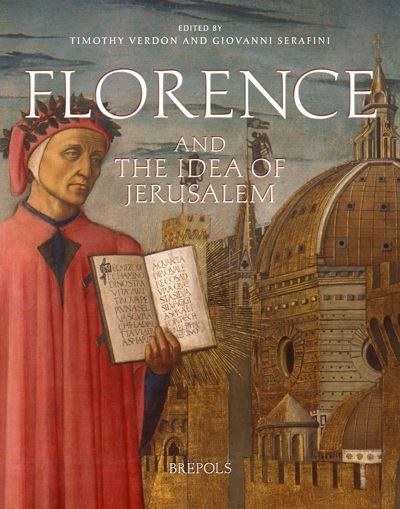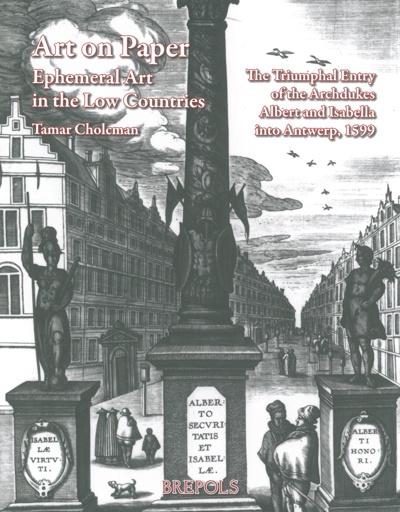
Arrayed in Splendour
Art, Fashion, and Textiles in Medieval and Early Modern Europe
Christoph Brachmann (ed)
- Pages: 264 p.
- Size:216 x 280 mm
- Illustrations:3 b/w, 111 col.
- Language(s):English
- Publication Year:2019
- € 110,00 EXCL. VAT RETAIL PRICE
- ISBN: 978-2-503-57965-8
- Paperback
- Available
Original contributions of leading scholars in their field give an insight in the current state of research on textile art in the Middle Ages and early modern times.
"The success (...) is in part due to the diversity of voices and methodologies, with a range of specialists in areas of textile curation and conservation, history and art history, and a strong emphasis on extant objects, archival evidence from inventories and accounts and contemporary legal and moralising literature." (Erin Griffey, in: The Burlington Magazine, February 2021, p. 185)
“(…) the book broadens our understanding of amedium that moved across the globe like no other artform, and whose semantic properties often derived as much from the distance travelled as frommaterial value or iconographic symbolism. The highquality illustrations make the book a pleasure to behold. Furnished with a glossary of technical terms and an extensive bibliography, the volume speaks to experts and a lay audience alike.” (Christine Rheo Brandner, in Speculum, 96/3, 2021, p. 783)
“Arrayed in Splendour verdeutlicht, wie wichtig es ist, Textilien als visuelle Marker in die historische Forschung zu integrieren, liefern sie doch Zugänge, die sonst verschlossen bleiben. Die Beitragenden weisen mehrfach auf Desiderate hin. Die Notwendigkeit zur internationalen Vernetzung wird dabei augenfällig. Der Band leistet hier einen wichtigen Beitrag: Beinahe die Hälfte der zitierten Literatur ist deutschsprachig. Die auf Englisch verfassten Beiträge der internationalen Expertinnen und Experten erschließen nun auch die Forschung hierzulande für die weltweite Forschungscommunity.“ (Katharina Christa Schüppel, in Das Mittelalter, 45, 2020)
Precious textiles, fabrics, embroideries, and tapestries played an important role in medieval and early modern cultures of representation. The high esteem in which the textile arts were held was not only due to the enormous material value of gold and silk, which had to be imported from distant regions, but also to the extremely complex and time-consuming production conditions which required a level of technical expertise that was present only in a few highly specialized centers.
In stark contrast to their medieval and early-modern reception, it has been only in recent years that the traditional view of the textile arts in art-historical discourse as an ‘applied’ art, and therefore a ‘low’ one, has undergone a fundamental shift. The aim of this volume is to provide insight into the current state of research on the topic. Ranging from the twelfth to the seventeenth centuries, this collection of essays of leading scholars in the field offers an invaluable window into the complexity of the textile arts and their medium, from the overpowering splendour of liturgical and princely garments and the luxurious fabrics used for them in the Middle Ages and early modern period, to the visual world of monumental room decorations in the form of tapestries.
Introduction – Christoph Brachmann
Clothing for a Marriage Made in Heaven: The Role of Textiles in Ecclesiastical Consecration Rites — Evelin Wetter
Love and Resurrection: The Luxembourg Dynasty’s Funeral Garments at St Vitus Cathedral in Prague — Christoph Brachmann
All That Glitters: Cloth of Gold as a Vehicle for Display 1300–1550 — Lisa Monnas
The Making of Appearances at the 1530 Augsburg Imperial Diet — Ulinka Rublack
The Two Faces of Power: The Image Strategy of Cosimo I de’ Medici — Roberta Orsi Landini
Representatives of Power – Tapestries Made for Kings and Emperors — Katja Schmitz-von Ledebur
Virtue and Vice: Clothing and Kingship at the Courts of Charles I and Charles II (1625–85) — Maria Hayward
Arrayed in Splendour: An Africanist’s Perspective — Victoria L. Rovine




